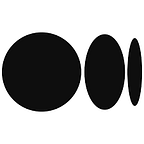Coefficient of Variation | Covariance | Correlation Coefficient — Descriptive Statistics
Coefficient of Variation
The coefficient of variation is the ratio of the standard deviation to the mean. The higher the coefficient of variation, the greater the level of dispersion around the mean. It is generally expressed as a percentage. The lower the value of the coefficient of variation, the more precise the estimate.
The coefficient of variation, also known as relative standard deviation, is a standardized measure of dispersion of a probability distribution or frequency distribution.
Example:
Coefficient of Variation are calculated by Sample and Population.
Disadvantages:
When the mean value is close to zero, the coefficient of variation will approach infinity and is therefore sensitive to small changes in the mean. unlike the standard deviation, it cannot be used directly to construct confidence intervals for the mean.
Covariance
Covariance measures the directional relationship between the returns on two assets. A positive covariance means that asset returns move together while a negative covariance means they move inversely.
Covariance is a measure of the joint variability of two random variables. If the greater values of one variable mainly correspond with the greater values of the other variable, and the same holds for the lesser values, the covariance is positive.
Higher the “value” stronger the “relation” between them.
Example:
Correlation Coefficient
Correlation coefficients are used to measure how strong a relationship is between two variables. A correlation coefficient is a numerical measure of some type of correlation, meaning a statistical relationship between two variables
The correlation coefficient ranges from −1 to 1. A value of 1 implies that a linear equation describes the relationship between X and Y perfectly, with all data points.
In statistics, the correlation coefficient, also referred to as Pearson correlation coefficient or Pearson’s r, the Pearson product-moment correlation coefficient, or the bivariate correlation, is a measure of linear correlation between two sets of data.
Also as
Types of Correlation
Positive Correlation
Negative Correlation
No Correlation
Positive Correlation
A positive correlation is a relationship between two variables in which both variables move in the same direction.
Examples of positively correlated variables include:
- Hours spent studying and grade point averages.
- Education and income levels.
- Increase in height and weight.
- Smoking and lung disease.
Negative Correlation
A negative correlation is a relationship between two variables in which an increase in one variable is associated with a decrease in the other.
Negative correlation is a relationship between two variables in which one variable increases as the other decreases, and vice versa.
Examples of positively correlated variables include:
- Yield of crops and price.
- Sale of woolen garments and day temperature.
- Demand of commodity may go down and result of rise in price.
No Correlation
A no correlation exists when there is no relationship between two variables.
Zero or no correlation: A correlation of zero means there is no relationship between the two variables. In other words, as one variable moves one way, the other moved in another unrelated direction.
Examples of positively correlated variables include:
- No relationship between the amount of tea drunk and level of intelligence.
- The more funds you invest in your business, the more employees will leave work early.
- Positive correlation: A positive correlation would be 1. This means the two variables moved either up or down in the same direction together.
- Negative correlation: A negative correlation is -1. This means the two variables moved in opposite directions.
- Zero or no correlation: A correlation of zero means there is no relationship between the two variables. In other words, as one variable moves one way, the other moved in another unrelated direction.
Thanks for reading, Please have a look on other topics as well to enhance more knowledge on statistics for data science.
